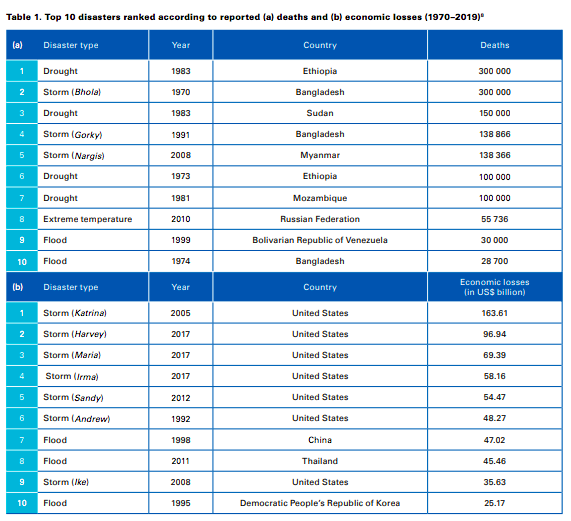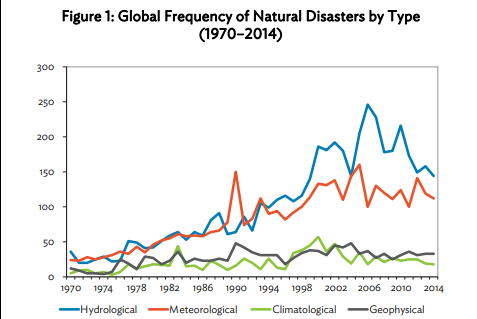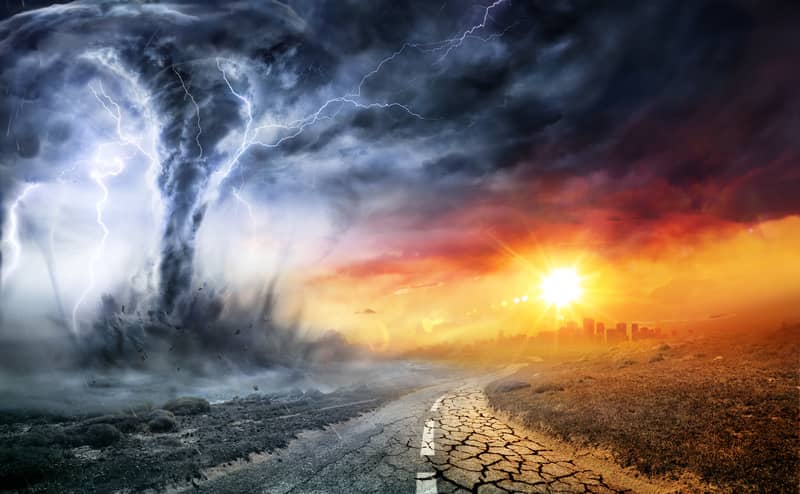Life on Earth is very unpredictable. Nature is the biggest mystery in the world. According to the study, we researched only 29% of the ocean, on land we can only dig up to the lava core of the earth. Mysteries still remain mysteries. Similar to natural calamities. Though we have advanced technologies to detect earthquakes and predict tsunamis, we can’t be sure. Natural disasters are unpredictable and disastrous beyond what we can imagine. Green growth which means extensive tree plantation is needed to avoid such natural calamities. Although it is a long-term process, we need to take precautions and be ready for such unpredictable natural disasters.
According to studies, Natural calamities and weather-related damage account for an annual bill of $23.46 billion in the United States. In this blog, we will see safety measures during natural calamities that help you to act wisely and save your loved ones. Are you ready?
What is Natural Disasters?
Natural disasters are catastrophic events that often occur without warning and disrupt the ecosystem, causing damage to personal lives, property, transportation, and livelihood. While preventing natural disasters is impossible, timely preparation can minimize damage. As such, every natural calamity has its own set of precautions to be taken, which must be followed to save precious lives.
In short, natural disasters or natural calamities are major events that occur in biological processes and can potentially cause a loss of life or property. It is also called geological or meteorological events.
Types of Natural Disasters
|
Hydrological Disasters |
Geological Disasters |
Meteorological Disasters |
Space Disasters |
|
Flood |
Avalanche |
Heat waves |
Gamma rays burst |
|
Limnic eruption |
Landslides |
Cold waves |
Impact events |
|
Tsunami |
Earthquake |
Drought |
Solar flares |
|
|
Sinkholes |
Hail storms |
|
|
|
Volcanic eruption |
Cyclonic storms |
|
|
|
|
Blizzard |
|
|
|
|
Tornadoes |
|
Hydrological Disasters
Hydrological disasters are sudden and violent natural calamities caused by changes in water below the surface or in the atmosphere.
Examples:
Flood: China 1931. It was also called one of the deadliest floods in history, with the death toll estimated to be between 3.7 million to 4 million.
Tsunami: In 2011. a huge earthquake and tsunami killed thousands of people and caused a nuclear power plant to melt down.
Limnic Eruption: Lake Nyos 1986. A limnic eruption is a rare natural disaster that has only been observed twice. The deadliest one was the Lake Nyos eruption in 1986, which killed 1746 people and 3500 cattle.
Geological Disasters
These natural calamities caused by changes in the earth’s surface can be geological. Volcanic eruptions and earthquakes are common in areas with active plate tectonics.
Examples:
Avalanche: Peru 1970. An earthquake triggered an avalanche in Peru, killing nearly 20,000 people.
Landslides: Pithoragarh Uttarakhand. 1998. An entire village was swept out.
Earthquakes: Gujarat 2001. An earthquake which registered 7.9 on the Richter scale, killing over 1,00,000 people.
Volcanic Eruption: Mount Vesuvius – In 79 AD. the deadliest volcano ever erupted and caused the death of around 2,000 people. It released 100,000 times more thermal energy than the Hiroshima-Nagasaki bombings.
Meteorological Disasters
Extreme weather like rain, snow, or drought can cause meteorological natural disasters that harm the environment and life. Hurricanes, hailstorms, and tornadoes are examples of these disasters.
Examples:
Cyclonic Storm: West Coast of India 1920. Cyclone Nisarga wreaked havoc.
Blizzard: Iran 1972. A blizzard dropped nearly 26 feet of snow, completely covering 200 villages, and causing the death of 4,000 individuals.
Cold waves: Baghdad Feb. 2020. The very first snowfall since the 1910s.
Drought: Cape Town, South Africa 2017 to 2018. A major water crisis. This crisis had an extensive impact on public health and the nation’s economy.
Tornadoes: Daulatpur-Saturia. This was the deadliest tornado to occur in recorded history. It killed approximately 1,300 people and injured an estimated 12,000 people.
Space Disasters
Space disasters like solar flares, impact events, and airburst events can have significant consequences. Impact events, for example, have caused at least one mass extinction in the earth’s history, including the extinction of non-avian dinosaurs. Solar flares can damage electrical equipment, causing disruption. Gamma-ray bursts, which are extremely energetic explosions in distant galaxies, could potentially cause a mass extinction event if they were to occur again today.
Examples of Natural Disasters
|
Type |
Disaster |
Date |
Affected Areas |
Event |
|
Geological Disasters |
Sinkholes |
February 2007 |
Guatemala City, Central America |
A 100-meter-deep sinkhole formed suddenly. 5 deaths and thousands of people evacuated in this natural calamity. |
|
|
Earthquakes |
26 January 2001 |
Gujarat |
7.9 Richter scale earthquake ripped through Gujarat, killing over 1,00,000 people. |
|
|
Landslides |
18 August 1998 |
Malpa, Uttarakhand |
The entire village was wiped off in the district of Uttarakhand. |
|
|
Avalanche |
31 May 1970 |
Huascaran – ancash, Peru. |
The earthquake triggered the Avalanche in Peru, killing 20,000 people. |
|
Hydrological Disasters |
Limnic Eruption |
21 August 1986 |
Lake Nyos, Cameroon. |
In Lake Nyos limnic eruption, 1746 people and 3500 cattle were killed. |
|
|
Tsunami |
11 March 2011 |
Pacific coast of Japan |
The 9.0 magnitude earthquake caused a 33ft high tsunami to strike. Resulting in the death of 18,500 people and the nuclear power plant meltdown of Fukushima. |
|
|
Flood |
1931 |
Republic of china |
A series of floods devastated China. Causing the death of people estimated between 3.7 million to 4 million. |
|
Meteorological Disasters |
Blizzard |
1972 |
Iran |
A blizzard dropped nearly 26ft of snow, covering 200 villages in Iran, causing 4000 people deaths. |
|
|
Tornadoes |
26 April 1989 |
Daulatpur – Saturia, Bangladesh. |
The deadliest tornado in natural calamities history caused the death of 1,300 people and 12,000 injured people. |
|
|
Cyclonic storm |
2020 |
India |
Cyclone Nisarga wreaked havoc on the west coast of India. Also, cyclone Amphan caused widespread damage in eastern India. |
|
Space Disasters |
Impact event |
~66 million years |
Entire earth |
Chicxulub Impactor is an asteroid that struck Earth roughly 66 million years ago. Caused extinction of 75% of all plants and animal species. |
A Growing Trend of More Destructive Climate Disasters
The period from a period when natural calamities or climatic changes get more destructive.
According to research (1970 to 2019) the total frequency of natural calamities in the world was 13% higher.

Source: https://public.wmo.int/
Significance:
The global increase in intense floods, storms, droughts, and heat waves has a likely and ominous link to climatic change. There is a growing literature on the evidence linking anthropogenic climate change with natural disasters. Drawing attention to these climate-related disasters, arguably the most tangible manifestation of global warming, could help mobilize broader climate action. And it could influence the directions taken for economic growth worldwide and pave the way to a much-needed switch to a path of low-carbon, and Tree plantation.

Source: https://www.adb.org/
Precautions During Natural Calamities
Earthquakes
The shifting of tectonic plates causes earthquakes (dangerous natural calamities) under the earth’s crust, and it is responsible for mass destruction. When faced with an earthquake, these tips can be of use:
If you are indoors:
- Take cover under a sturdy table or other pieces of furniture and hold on until the shaking stops.
- Stay away from glass, windows, outside doors and walls, and anything that could fall, such as lighting fixtures or furniture.
- Stay inside until the shaking stops, and it is safe to go outside. Most injuries occur to people trying to move to a different location inside the building or try to leave.
- Do not use the elevators.
If you are outdoors:
- Stay away from buildings, streetlights, and utility wires.
- Stand in open ground until the shaking stops. It’s dangerous to stay directly outside buildings, at exits, and alongside exterior walls. Ground movement during an earthquake is seldom the direct cause of death or injury. Most earthquake-related casualties result from collapsing walls, flying glass, and falling objects.
Tsunamis
Tsunamis are a series of enormous ocean waves caused by earthquakes, underwater landslides, or volcanic eruptions. Tsunami waves range from tens to hundreds of feet tall and can travel twenty to thirty miles per hour. When faced with a natural disaster, these tips are to be followed:
- Turn on your radio/TV to learn and follow the precautionary instructions during a tsunami warning, primarily when you reside near a coastal area.
- Move inland to higher ground immediately and stay there.
- Check for a noticeable recession in water away from the shoreline as this is nature’s tsunami warning and should be heeded. It would help if you moved away immediately.
- Please stay away from flooded and damaged areas until officials say it is safe to return.
- Please keep yourself away from debris in the water; it may pose a safety hazard to boats and people.
Cyclones
Cyclones are tropical storms, caused by atmospheric disturbances around a low-pressure area. Cyclones are accompanied by strong winds, moving at a speed of sixty-two mph or more. When faced with a hurricane, keep these tips in mind:
- Be alert to changing weather conditions.
- Listen to radio/TV for the latest information.
- Look for approaching storms.
- Look for the following warning signs: – Dark, often greenish sky – Large hailstones, a large, dark, low-lying cloud (particularly if rotating), roars, similar to a freight train.
- If you see approaching storms or any of the danger signs, be prepared to take shelter immediately.
- If you are under a tornado warning, seek shelter immediately.
Note: In places where you have designated cyclone shelters, take refuge there.
Floods
Floods are among the earth’s most common and dangerous natural hazards, formed due to a flow of water on areas of land that are usually dry. Excessive rain, damage to nearby dams, and tsunamis are some of its causes. When faced with flooding, these tips are to be followed:
- Do not attempt to walk, swim, or drive through the floods. Floodwater contains debris and contamination and can also be deadly due to fallen electrical lines in the water.
- Stay clear of bridges over fast-moving water.
- Keep an eye out for evacuation alerts.
- Move to higher ground.
- If your vehicle is trapped in a flood and water starts filling inside the car, seek refuge on the roof.
FAQs for Natural Calamities
1. What are the top 10 natural disasters?
- Haiti Earthquake of 2010
- Hurricane Katrina of 2005
- Hurricane Andrew of 1993
- Tohoku Earthquake and Tsunami
- Tsunami of 2011
- Tangshan Earthquake
- Cyclone Nargis
- 2008 China Earthquake
- Iran Earthquake 2003
- Pakistan Earthquake 2005
2. What are the causes of natural disasters?
The main causes of natural disasters are tectonic shifts, lunar activities, deforestation, soil erosion, air pressure, ocean currents, pollution, global warming, mining, seismic waves, etc. Agricultural practices, mining, deforestation, etc., can lead to landslides. Plants and animals can also be damaged by wildfires.
3. What is the biggest disaster in India?
India ranks 3rd in the world’s highest number of natural disasters list. Amarnath Yatra was the biggest natural disaster in India.
Conclusion
No one wants to be caught in dangerous conditions. But natural calamities are unpredictable. In addition, it is essential to stay calm during times of natural calamities. While you do that, always keep 108 emergency number handy to reach out to emergency medical services providers like Ziqitza HealthCare Limited (ZHL) when aid is needed. Ziqitza HealthCare is a leading emergency healthcare company operating 112 emergency number across different states of India. It has helped rescue and save the lives of people from natural disasters since its inception in 2005.
Get yourself guided and prepared to face any emergency situation with Ziqitza HealthCare Ltd.
Ziqitza’s health and emergency programs provide training to make everyone prepare for unwelcome emergencies. Be prepared for natural calamities, contact us to know more.


